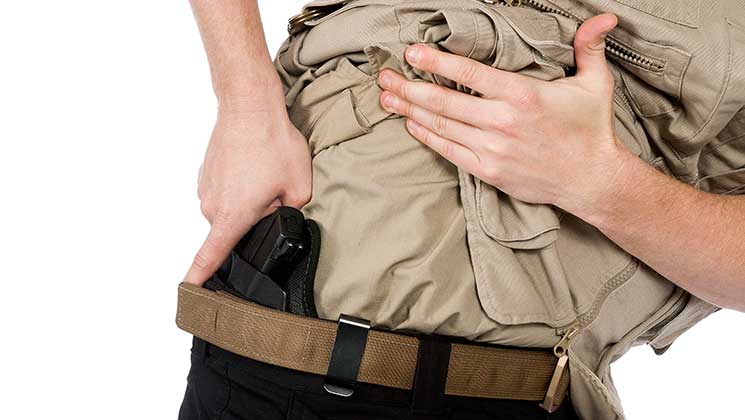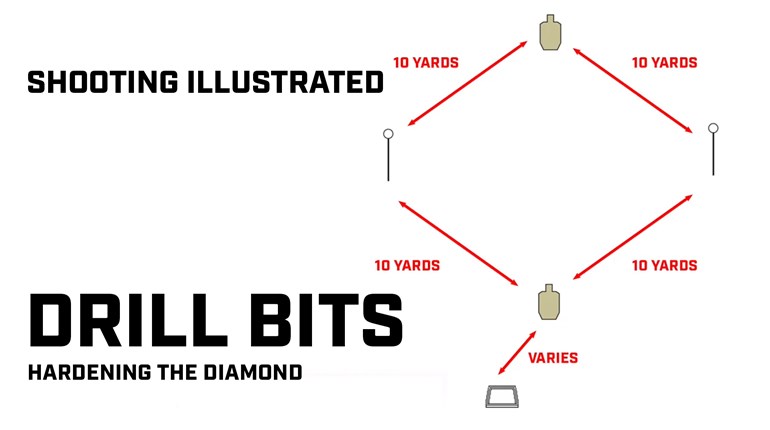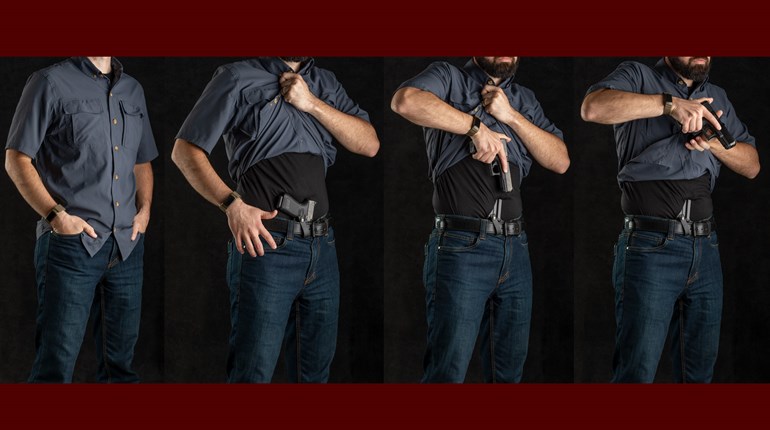
Shooting should be fun. But especially when practicing with our concealed-carry pistol—instead of our favorite range gun—we would be better served if we focus on some drills designed to improve our defensive skills. And, although it is a bit expensive to do all of our practice with premium defensive ammunition, we should cycle that ammunition through our pistol often enough to keep fresh fodder in our carry gun, be familiar with how it runs and know where it hits. Here's a practice drill that consumes one 20-round box of defensive ammunition and includes some of the skills we all should have.
For this exercise, you'll need two silhouette targets with center-mass and head-shot areas defined, or you can make one yourself with an 8-inch circle representing the upper chest and a 3x5-inch card for the head-scoring area.
At a distance of 3 yards, draw and fire two rounds at center mass within 2 seconds, strong hand only, and repeat. Next, draw and fire two rounds center mass and one round to the head within 3 seconds, then repeat. Move back to 5 yards, draw and fire two rounds on two separate targets, aiming for center mass, each within 4 seconds. Retreat to 10 yards, and from a low-ready position, fire two rounds center mass within 4 seconds. Finally, also from 10 yards and from the low-ready position, fire two rounds each, center mass, on two targets, within 5 seconds.
Remember, the idea here is to use your concealed-carry pistol the way you would normally carry it concealed. If you find you are having trouble making the times or you're not practiced in drawing from concealment, try working the drills from a low-ready position—with both hands on the pistol and the muzzle down. When you find you can shoot this drill comfortably, it's time to add elements like vocalizing and moving. As you draw the pistol or point it, yell, "Don't move!" and take a big step to one side or the other.
Don't forget your post-shooting sequence: After you're done shooting, bring the concealed-carry pistol down to low ready, scan, breathe and reload the pistol. Especially with small pocket pistols that may only have a five- or six-round capacity, it's important to get the gun back to full capacity after shooting. Practicing your tactical or speed reloads should be part of all training sessions.
If you find getting center-mass hits at 10 yards is easy, move back and try shooting at 15 or even 25 yards. Yes, most defensive shootings occur at shorter ranges, but you should still have an idea of your capabilities at distance should the need arise. You may also discover, like I have, that some of the very small pocket pistols are wholly unsuited for defensive use at anything beyond a few yards. This might be due to a lack of sights or an unmanageable trigger, but in any case, you may want to reconsider your concealed-carry pistol options. This drill can help you improve your skills and sort out your defensive choices.




































